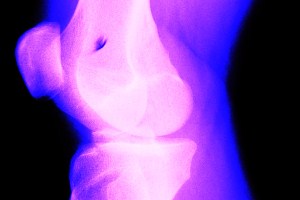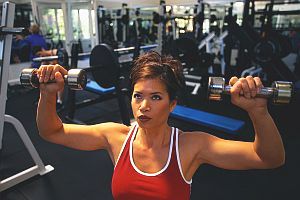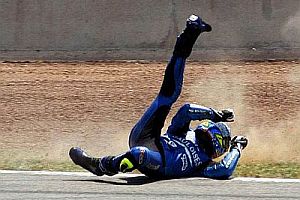 It’s often hard to know whose science to believe and whose advice to take when it comes to Genetically Modified Organisms (GMOs) in our food. The information available on this subject is complex, the stakes are high (in terms of the health, social, environmental, political and economic issues involved) and passions run hot on all sides of the debate. So it’s not surprising that facts are often used selectively and much of the discussion is biased.
It’s often hard to know whose science to believe and whose advice to take when it comes to Genetically Modified Organisms (GMOs) in our food. The information available on this subject is complex, the stakes are high (in terms of the health, social, environmental, political and economic issues involved) and passions run hot on all sides of the debate. So it’s not surprising that facts are often used selectively and much of the discussion is biased.
On one side of the debate, large agribusinesses such as Monsanto stress the potential human and environmental benefits of genetically altered crops, such as reduced pesticide use and being able to feed a growing worldwide population. On the other side of the debate, opponents of genetic engineering are often guilty of scaremongering and using emotionally-loaded labels like “Frankenfoods” to color the conversation. So what does the science currently tell us?
Genetically modified plants have now been with us for three decades, and have been widely planted since the mid-1990s. This kind of technology differs from conventional plant breeding in that it uses genes from other species to modify DNA rather than selecting for certain characteristics from within a breeding population. Of particular interest to farmers is the ability to engineer plants that are resistant to certain pests and herbicides, can tolerate harsher or more variable environments and have increased nutritional value (more vitamins or minerals, for example).
On the other side of the fence, concerns of consumers and environmental activists are threefold:
1. That genes from crop plants will spread to the wild and other, non-engineered or organic, crops or that there may be unanticipated environmental impacts
2. That there may be unknown long-term health effects from this relatively untested technology
3. That farmers, especially in developing countries, will become over-reliant on global seed companies rather than saving their own seed, resulting in greater dependency and poverty.
Thus far, some 13 plant species have been genetically engineered in one form or another, including wheat, soybeans, corn, tomatoes, alfalfa, canola, potatoes, rice and sugar beets. In 2010, genetically engineered crops accounted for over 320 million acres of planting–165 million in the USA alone. Over 80% of the soy and corn being eaten as food in the USA is now consumed in its genetically modified form.
Given the widespread planting and consumption of GM crops over the last decade, it might be expected that there would be a wide range of studies on the safety of these foods. However, a report in 2003 found only 10 such studies in a search of the literature. This number had grown to just 42 by 2011. Of these, 36 studies were found to demonstrate no negative effect when GM crops were fed to animal species, four had positive effects and two negative. The two negative studies were both carried out prior to 2000 and have not since been replicated. Despite the largely positive conclusions drawn from these studies, a subsequent review of 19 studies found that there was sufficient data to indicate a likelihood of liver and kidney damage. The authors also noted that some significant results were stated as being “biologically insignificant,” a conclusion that they found questionable.
It is notable that soy allergies in the UK rose by 50% following the introduction of GM soy products. One study found that levels of a known allergen, trypsin inhibitor, were increased by more than a quarter in GM compared to non-GM soy, and that these levels were seven times higher following cooking. Further studies have also demonstrated negative environmental effects related to the use of GM crops, such as an increased mortality of wetland and water insects exposed to genetically modified corn pollen, and increased use of herbicide in plantations of GM soy, cotton and corn compared with their conventional counterparts. This casts considerable doubt on one of the main proposed benefits of herbicide resistant crops.
Independent scientists reviewing the safety of GM crops have called into question both the general lack of safety testing of GM crops and absence of follow-up studies, especially ones that are not in some way funded by the biotech companies themselves. Given this and the lack of stringent testing requirements for GM crops prior to both widespread field planting and human consumption, there remains cause for concern. The notion of “substantial equivalence” that largely exempts GM food from safety testing if it is seen to be the same as its conventional counterpart, has also been flagged as unnecessarily lenient on a technology most regard as unproven.
While the general public has (for the most part) been reassured by the fact that there have been very few few short-term disasters, genes from GM crops continue to find their way into wild and conventionally grown (including organic) plants as well as the larger food chain. Until sufficiently rigorous independent studies are available to determine the short- and long-term effects of GM crops, it is hard not to conclude that we are currently in the middle of a long-running experiment in which most of the benefit is gained by the biotech companies while most of the risk is carried by consumers and the environment. The problem is that if GM crops, or even just some of them, are eventually found to be a risk not worth taking, it is hard to put the genie back in the bottle. In some respects, it is simply too late now to do the long-term safety assessment that should have been carried out well before widespread approval was granted.
For the time being, the best that consumers can do is to push for disclosure and choice so that they have more flexibility when they shop at the local grocery store.
 Many people experience a popping or cracking noise in their knees as they squat down or bend their knees, and this seems to happen with increasing regularity as we age. The medical term for this condition is called crepitus. It is a very normal phenomenon and, so long as it is painless, there is nothing to be overly concerned about. Whether young or old, cracking and popping of the knees is a common occurrence.
Many people experience a popping or cracking noise in their knees as they squat down or bend their knees, and this seems to happen with increasing regularity as we age. The medical term for this condition is called crepitus. It is a very normal phenomenon and, so long as it is painless, there is nothing to be overly concerned about. Whether young or old, cracking and popping of the knees is a common occurrence.







